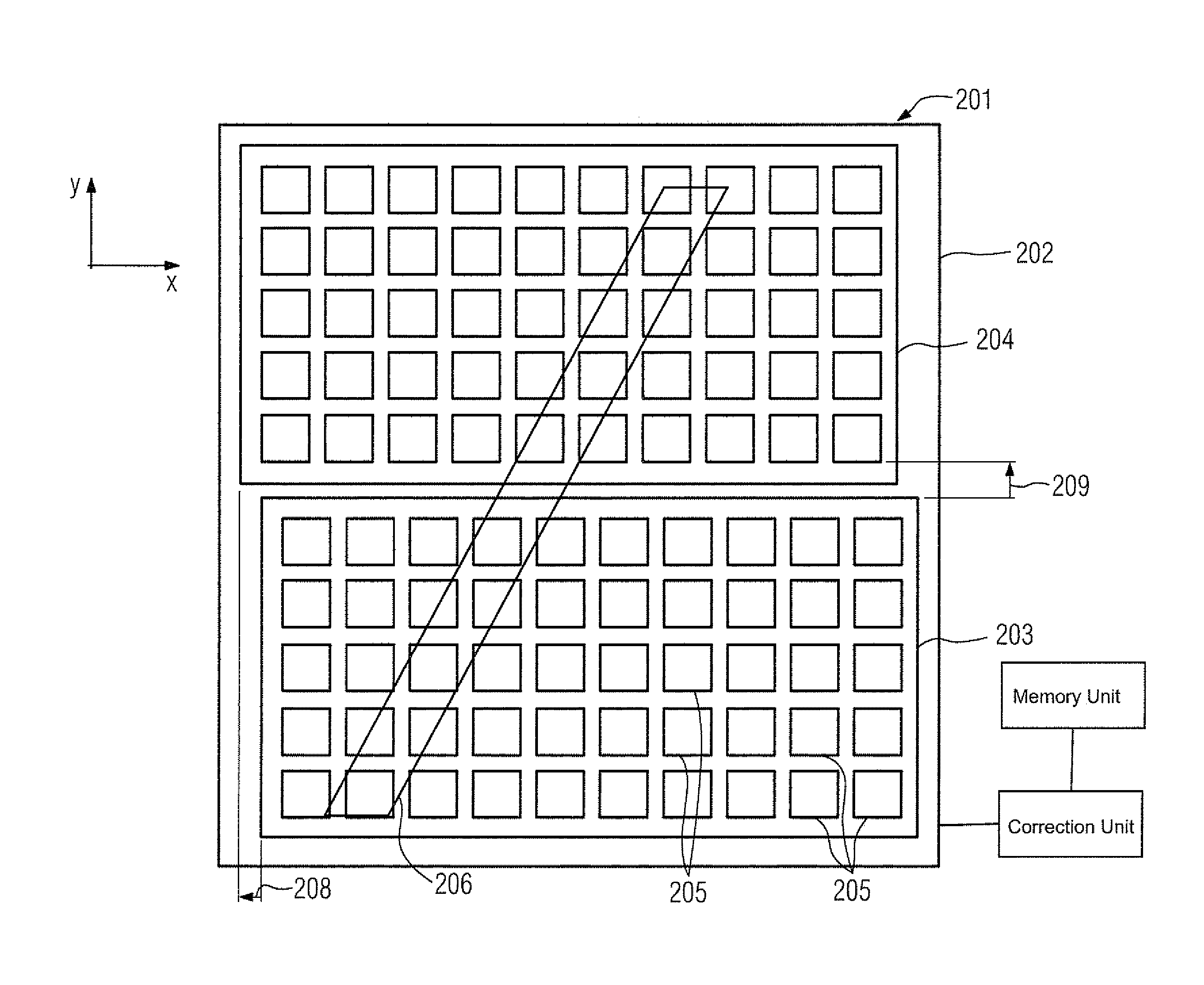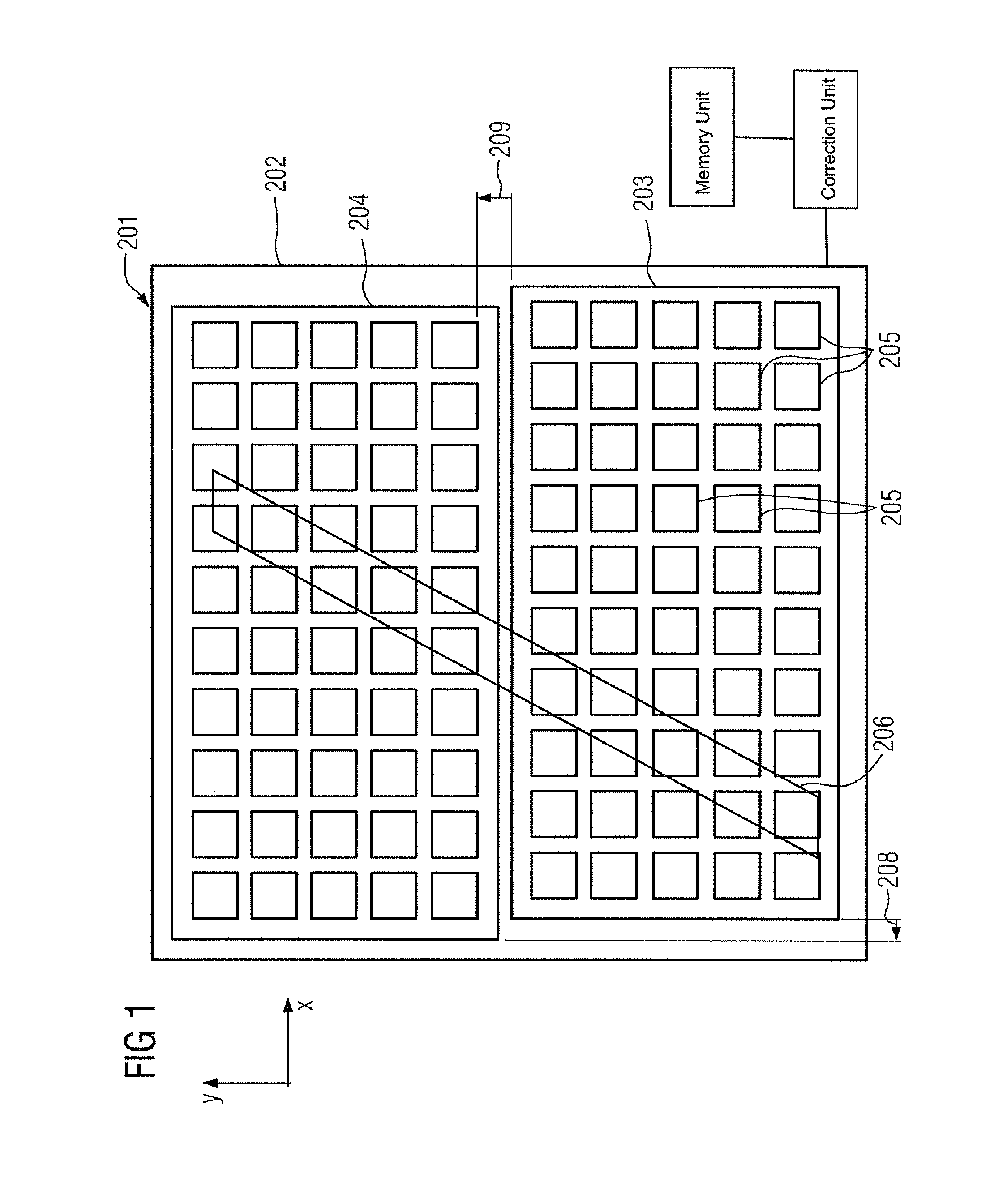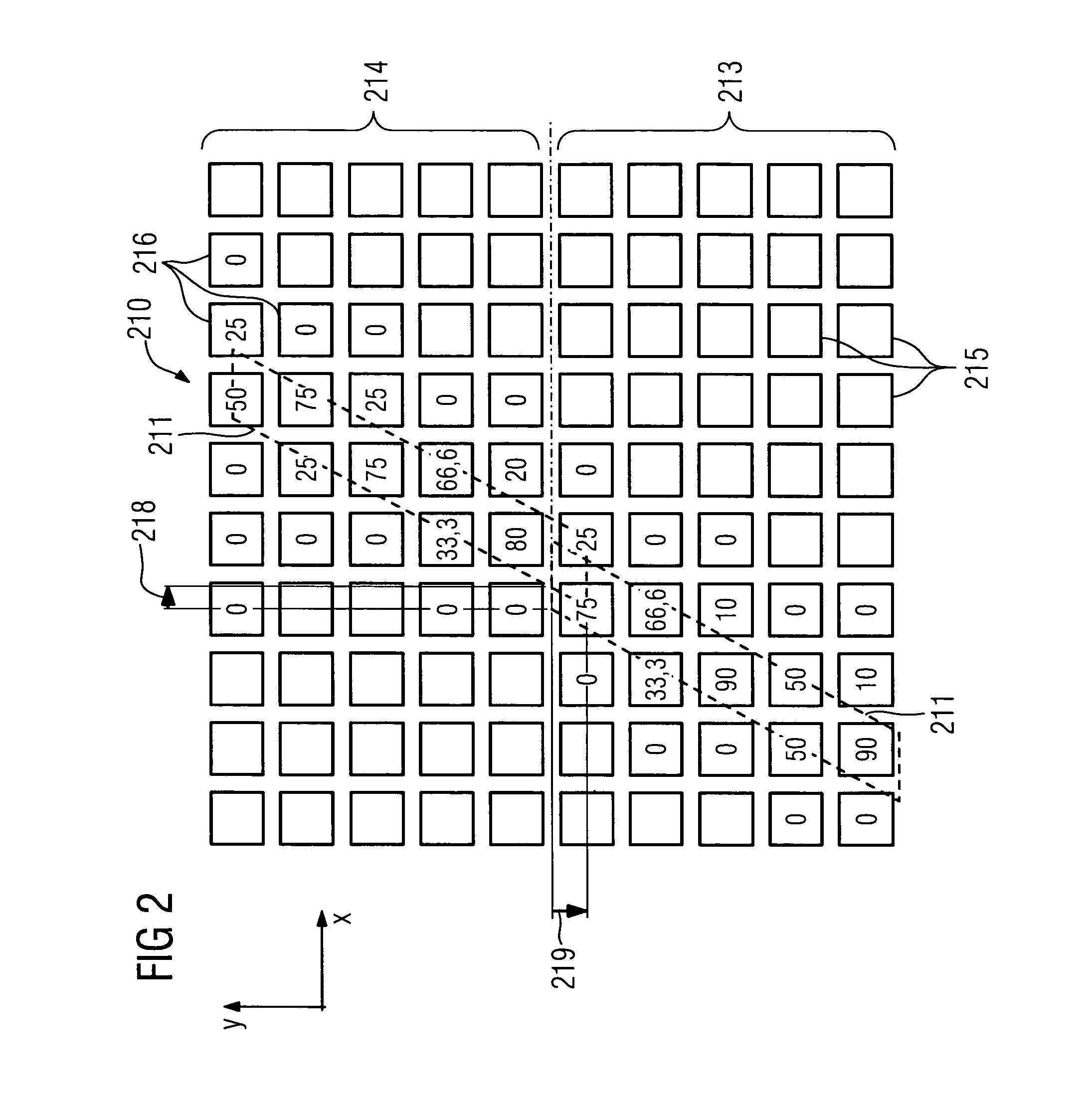Correction method for solid-state detectors and solid-state detector
a detector and solid-state technology, applied in the direction of instruments, x/gamma/cosmic radiation measurement, optics, etc., can solve the problems of corrupted object representations and artifacts, x-ray image discontinuity, etc., to save time and money for expensive processing units, simple and straightforward correction, and discontinuity to be corrected especially easily
- Summary
- Abstract
- Description
- Claims
- Application Information
AI Technical Summary
Benefits of technology
Problems solved by technology
Method used
Image
Examples
Embodiment Construction
[0018]FIG. 1 shows a pixel matrix 201 of a solid-state detector, which is made up of a first plate element and a second plate element, with both elements being glued to a glass substrate 202 and thereby being arranged in one plane. The first plate element is advantageously formed from a first a-Si plate 204 and the second plate element from a second a-Si plate 203. Each a-Si plate 203; 204 consists of a finite number of square-shaped pixel elements 205. The pixel elements measure raw values, which can for example be gray values, and which can then for example be displayed on a monitor as a raw x-ray image 210.
[0019]The first a-Si plate 203 and the second a-Si plate 204 are arranged displaced relative to one another, or for simpler definition the second a-Si plate 204 is shifted from the first a-Si plate 203 by a displacement 208; 209. The displacement 208; 209 of the second a-Si plate 204 in relation to the first a-Si plate 203 has a first displacement component 208 which is directe...
PUM
 Login to View More
Login to View More Abstract
Description
Claims
Application Information
 Login to View More
Login to View More - R&D
- Intellectual Property
- Life Sciences
- Materials
- Tech Scout
- Unparalleled Data Quality
- Higher Quality Content
- 60% Fewer Hallucinations
Browse by: Latest US Patents, China's latest patents, Technical Efficacy Thesaurus, Application Domain, Technology Topic, Popular Technical Reports.
© 2025 PatSnap. All rights reserved.Legal|Privacy policy|Modern Slavery Act Transparency Statement|Sitemap|About US| Contact US: help@patsnap.com



